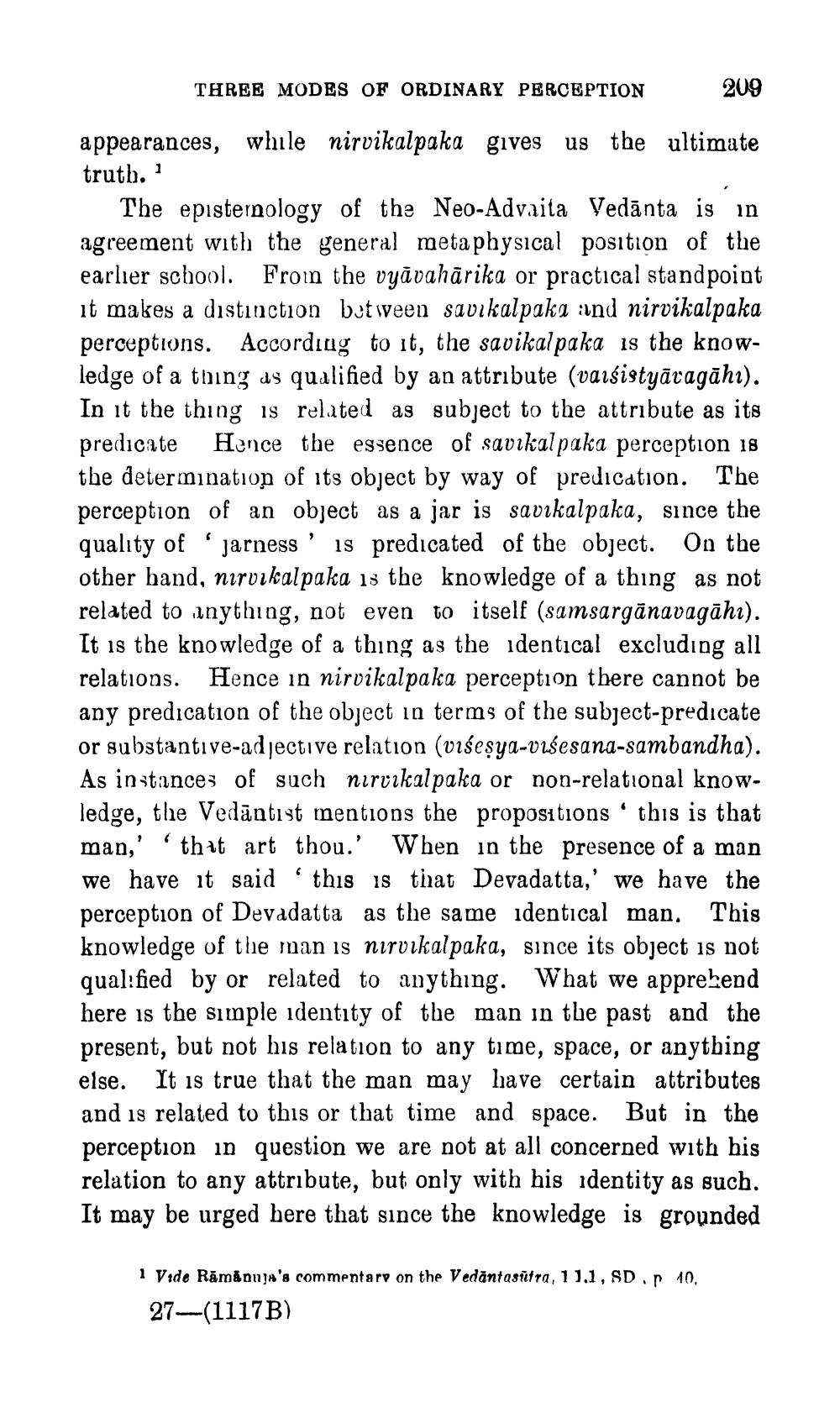________________
THREE MODES OF ORDINARY PERCEPTION
209
appearances, while nirvikalpaka gives us the ultimate truth. 1
The episternology of the Neo-Advaita Vedānta is in agreement with the general metaphysical position of the earlier school. Froin the vyāvahārika or practical standpoint it makes a distinction butween savikalpaka :ind nirvikalpaka perceptions. Accordiug to it, the savikalpaka is the knowledge of a thing as qualified by an attribute (varsistyāvagāhi). In it the thing is related as subject to the attribute as its predicate Hence the essence of savikalpaka perception is the determination of its object by way of predication. The perception of an object as a jar is savikalpaka, since the quality of 'jarness' is predicated of the object. On the other hand, nirvikalpaka 13 the knowledge of a thing as not related to anything, not even to itself (samsargānavagāhi). It is the knowledge of a thing as the identical excluding all relations. Hence in nirvikalpaka perception there cannot be any predication of the object in terms of the subject-predicate or substantive-adjective relation (višesya-visesana-sambandha). As instance of such nirvikalpaka or non-relational knowledge, the Vedāntist mentions the propositions. this is that man,' that art thou.' When in the presence of a man we have it said this is that Devadatta,' we have the perception of Devadatta as the same identical man. This knowledge of the man is nirvikalpaka, since its object is not qual:fied by or related to anything. What we apprehend here is the simple identity of the man in the past and the present, but not his relation to any time, space, or anything else. It is true that the man may have certain attributes and is related to this or that time and space. But in the perception in question we are not at all concerned with his relation to any attribute, but only with his identity as such. It may be urged here that since the knowledge is grounded
10.
1 Vode Rāmännja's commentare on the Vedāntasūtra, 11.1, SD. 27—(1117B)




